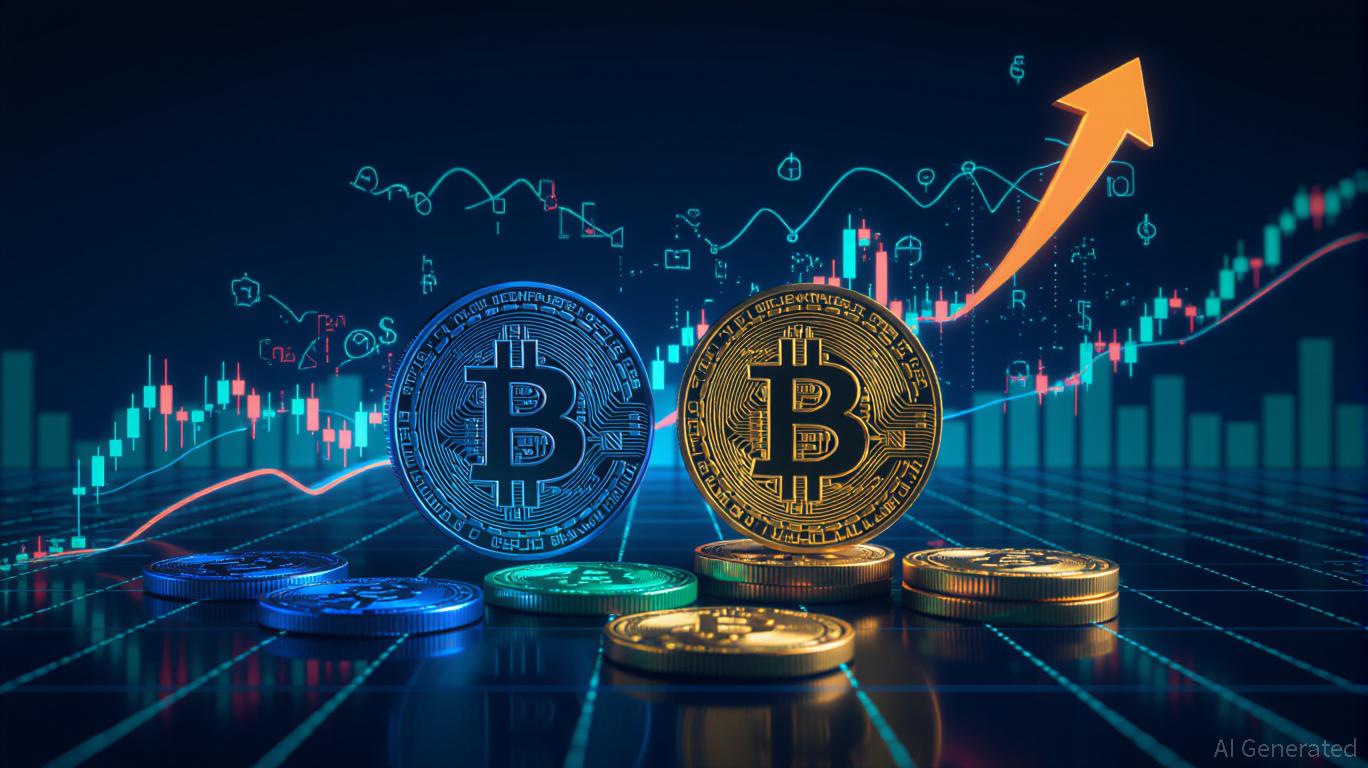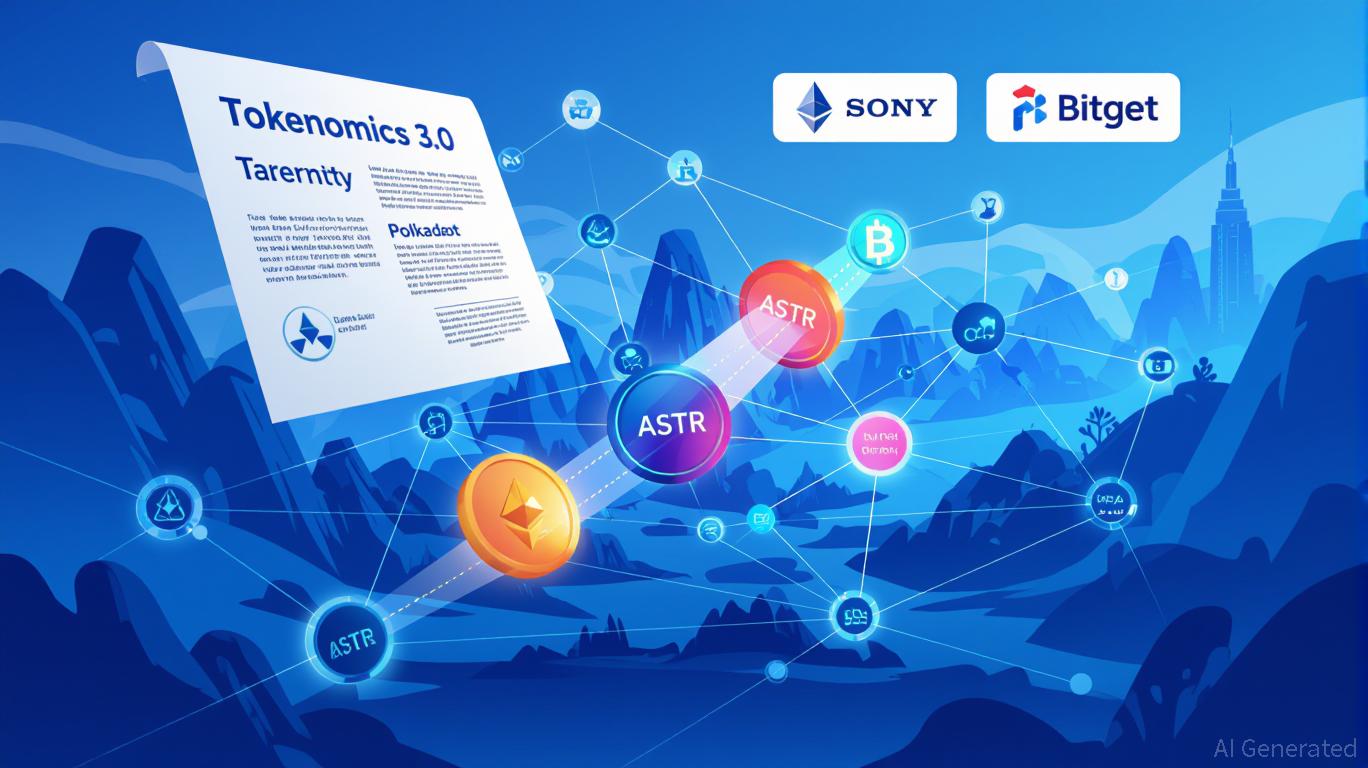The Increasing Importance of Stablecoins as Strategic Assets Amidst Crypto Market Volatility
- Institutional investors use stablecoins like USDC and BUSD to balance crypto portfolio risk and liquidity. - Allocating 5-10% to stablecoins enables yield generation via DeFi while mitigating volatility from assets like Bitcoin . - Mathematical models show stablecoins reduce portfolio beta, acting as near-risk-free assets during crypto market turbulence. - March 2023 depegging events exposed stablecoin vulnerabilities, highlighting risks tied to collateralization and issuer credibility. - As crypto marke
Stablecoins as a Portfolio Allocation Tool
Within crypto portfolios, stablecoins are increasingly regarded as equivalents to cash holdings.
In addition, stablecoins open up opportunities to earn yields through lending services and DeFi platforms. By placing USDC or BUSD into liquidity pools or staking them, investors can

Using Stablecoins to Hedge Against Volatility
The benefits of stablecoins go beyond just providing liquidity.
Take, for example, periods of extreme market stress—like the U.S. banking crisis in March 2023—when
Changing Market Trends and the Value of Diversification
As the digital asset market evolves, its behavior increasingly resembles that of traditional stock markets.
This stabilizing function is further supported by the expanding role of stablecoins in the global financial ecosystem.
Potential Risks and Key Considerations
Despite their strengths, stablecoins also come with certain risks.
Conclusion: Strategic Importance in Volatile Markets
USDC and BUSD are valuable for their ability to solve two major challenges in crypto investing: managing liquidity and controlling volatility. While not without flaws, their growing role in institutional portfolios reflects a more advanced market that requires both creativity and caution. For those navigating the uncertainties of 2025, stablecoins offer a crucial link between the high-risk world of crypto and the steadiness of traditional finance.
Disclaimer: The content of this article solely reflects the author's opinion and does not represent the platform in any capacity. This article is not intended to serve as a reference for making investment decisions.
You may also like
Huaxia's Digital Fund Connects Conventional and Decentralized Finance in Its Hong Kong Launch
- Huaxia's digital fund becomes Hong Kong's first digital-asset focused ETF, launching Nov 28, 2025. - The fund invests in non-China blockchain firms to mitigate regulatory risks, mirroring C1 Fund's diversified strategy. - Hong Kong's updated DeFi regulations enable institutional adoption, attracting global platforms like Miracle Exchange. - Market optimism balances with risks: cybersecurity threats and interest rates could pressure growth valuations. - The listing bridges traditional finance and DeFi, po
Prediction Market Sector Splits into Liquidity Providers and Distribution Networks
- Robinhood and Coinbase expand prediction markets via CFTC-regulated platforms, targeting $300M+ annualized revenue for Robinhood by 2025. - Kalshi ($11B valuation) and Polymarket ($12–15B) compete with regulated vs. decentralized models, while Nevada court challenges threaten $650M contracts. - Sector fractures into liquidity platforms (Kalshi/Polymarket) and distribution channels (Robinhood/Coinbase), with $51.39B combined trading volume in 2025. - Regulatory alignment becomes critical as Polymarket par
Astar (ASTR) Price Rally: Is This a Milestone for Blockchain Connectivity?
- Astar (ASTR) surged 150% in Q3 2025 via strategic upgrades and ecosystem growth, leading multichain infrastructure. - Key upgrades include Plaza for cross-chain interoperability and Burndrop PoC, plus Tokenomics 3.0 with 10.5B ASTR cap. - Partnerships with Sony/Animoca and $3.16M institutional investment boost adoption; 20% Q3 active wallet growth. - Analysts project $0.120 by 2033, citing 300,000 TPS scalability and modular infrastructure vs. Cosmos .

Solana News Update: Mainstream Investors Gain Approved Altcoin Exposure Through Franklin's Solana ETF
- Franklin Templeton files final paperwork for its Solana spot ETF (SOEZ), signaling imminent NYSE Arca listing after SEC Form 8-A submission. - The 0.19% fee structure includes waived sponsor costs on first $5B until 2026, building on its XRP ETF's $164M debut and broader altcoin ETF expansion strategy. - Regulatory clarity post-2025 commodity ETF guidelines has accelerated Solana ETF growth, with six U.S. funds now active and Bitwise's BSOL leading with $478M AUM. - The ETF offers direct SOL token exposu
